Do-it-yourself creation and arrangement of a warm cucumber garden
To get an early harvest of cucumbers or grow these vegetables in cold climates, experienced gardeners create special conditions to maintain a comfortable soil temperature: a warm bed. For cucumbers, such a structure is especially important if the weather is unstable. In more favorable conditions, heated housing replaces a greenhouse and helps to harvest bountiful crops 2-3 weeks earlier than usual.
Advice! The most comfortable temperature for growing greens is about +25 degrees.
What is a warm bed
There are different types of these structures, which have their own characteristics, but they all resemble a layered sandwich, consisting of different types of organic matter: wood and food waste, cut grass, peat, etc.
Advice! Such a cozy refuge for the winter can be chosen by rodents and the next year to harm the crop. Therefore, it is recommended to cover the bottom of a warm bed with a fine-mesh metal mesh.
A chemical reaction occurs between the organic components of different layers with the release of heat, which always maintains a sufficient temperature regime for the soil, even in cold weather. This allows you to plant cucumbers two or more weeks earlier than usual.
Hot beds are produced by placing too much manure and other organic additives: a lot of heat is generated, especially in hot weather. Such thermal rows are not suitable for planting. You need to wait for the manure to settle and cool so as not to burn the roots of the seedlings.
What does it consist of
The sequence of layers:
- First, wood waste is laid (sawdust, chips, branches, etc.). Their decomposition lasts several years, and during this period heat is released.
- The next layer consists of plant components: cut grass, leaves, tops. All of them should be free from pests or diseases, and also without seeds.
- Food waste is laid out on top.
- Then a layer of manure or compost.
- All this is covered with fertile soil.
In order to start the fermentation process and accelerate the production of heat, the garden bed is poured with boiling water 2-3 weeks before planting the cucumbers, and then covered with a film, preferably black, on top.
Tips:
- In cold regions, the film is not removed before sowing, but simply holes are made in it, where the cucumbers are planted.
- If the garden bed is prepared in the fall, then it is recommended to cover it with a film in order to protect it from weed seeds, which are carried everywhere by the wind.
- Organics are placed according to this principle: the higher the layer, the faster it decomposes. If the lower layers are transformed over several years, then the manure decomposes in one season.
- Every year the top fertile soil layer must be renewed: remove the old one and add a new one.
When is the best time to do
A warm cucumber bed can be prepared in autumn or spring:
- In autumn, when the main work has already been completed, there is more free time, it is easier to choose a suitable place, a lot of grass and other plant waste for organic layers.
- In the spring, the bed is formed in the first half of the season, as soon as the soil condition allows it.
- You can prepare a bed with the lower layers of organic matter in the fall: make drainage from the branches, cover it with grass, tops, leaves, of which there are a lot at this time. And in the spring add layers of food waste, manure, fertile soil.
Advantages and disadvantages
Creating a warm garden bed provides many benefits when growing cucumbers:
- suitable temperature conditions;
- several years of good harvests (and this is by building a warm bed once);
- juicy cucumbers at an earlier date;
- protection of plantings from the weather: the roots of cucumbers are constantly warm, this makes it easier for the plant to tolerate adverse conditions;
- guaranteed feeding, so that you don't have to worry about it during the season: nutrients are laid in sufficient quantities when arranging the garden;
- saving material and labor costs - as a result of all of the above.
Despite the many advantages, smart beds also have disadvantages:
- arrangement of many types of warm beds requires a one-time, but large waste of time and energy;
- in hot weather, plants burn, especially in the southern regions;
- due to the high nitrogen content in the soil, nitrates accumulate in the fruits.
Varieties
A lot of options for such structures have been invented, different methods are used, depending on the climate, the level of the groundwater, the available materials at hand. You can improvise with the height and width of the beds as you see fit. The main thing here remains its arrangement according to the principle of a puff pie.
Important! When laying wood waste and grass, these layers must be well compacted, otherwise the soil will subsequently settle and the roots will dry out, being on the surface, or cavities will form in which water will stagnate and the roots will rot.
Recessed
Such a bed is located flush with the soil surface or slightly deeper. Suitable more for open ground in arid regions - there, with moderate watering, it helps to provide plants with enough moisture. In areas where groundwater is close to the surface or where melt water stagnates in spring, such beds cannot be used.
To arrange a buried bed, a trench is dug into which organic matter is laid in layers.
The disadvantages include insecurity:
- from groundwater,
- weeds and creeping pests,
- frost.
Raised
The most common type of warm beds. Made in different heights and shapes.
Option 1
This method is ideal for areas that are frequently flooded during spring floods or summer heavy rains. You don't even need to remove the sod for such a bed. From scrap materials (boards, bricks, slate, etc.), they make a box with their own hands, which is filled with layers of organic matter, and on top with a fertile layer of soil.
A completed bed can last for several years. Suitable for open ground and greenhouses. It is mainly used for the cultivation of cucumbers and other vegetables in the central and northern regions.
Benefits:
- warms up well;
- it is convenient to weed;
- protected from soil pests;
- water does not stagnate in it;
- effective in places not suitable for other types of beds.
Disadvantages:
- significant material and labor costs for creation;
- a high bed often has to be watered;
- in hot weather, plants can burn.
Option 2
A sheltered view of a raised bed settles in regions with a cold climate. The sites are selected well lit. The height of the sides is half a meter. Seeds or seedlings of cucumbers are planted in a prepared warm bed, and on top they are covered with special material to create greenhouse conditions.
Option 3
A bed in the form of a high elongated hill. In this case, there is no need to arrange bumpers (more economical in terms of time and costs). In addition, the useful area of the bed is noticeably increased, compared to a horizontal surface fenced with sides. This is very important for small vegetable gardens.
Tricky beds
Both the weather and circumstances sometimes turn against the gardener, and there is no way to make a full-fledged warm garden bed. Whether it's a lack of time or components, there is a way out.
Whip up warm bed
A quick way to make a warm garden bed for cucumbers with your own hands:
- They dig up a plot of the required size.
- A layer of compost and rotted manure is spread on top.
- All this is leveled and mixed with a rake.
- Watered and covered with black film.
- When the soil is ready, holes are made in the covering material and seeds or seedlings of zelents are planted in them.
If there is no manure
When there is no compost, no manure, then a warm bed can be made from food waste, cut grass, tops, branches.
In this way, buried and raised ridges are made:
- The prepared trench or box is filled with plant and food waste, this layer is thoroughly tamped, otherwise the soil will settle during watering, the roots of the cucumbers will be on the surface and the plants will disappear.
- A 10 cm layer of fertile soil is poured on top.
- Hot water is poured over to activate the fermentation process.
- Cover the bed with a film for two weeks - you can't plant cucumbers earlier, because when the soil is without manure, it warms up more slowly.
Arrangement of a warm bed helps to protect cucumbers from weather fluctuations, in some cases - from stagnant water or dank soil. A little labor, once laid down, will allow for several years to harvest a more fatty crop and an earlier one. However, a smart bed has its drawbacks and requirements, they must be taken into account, first of all, so that the moisture-loving cucumbers do not dry out and burn out.

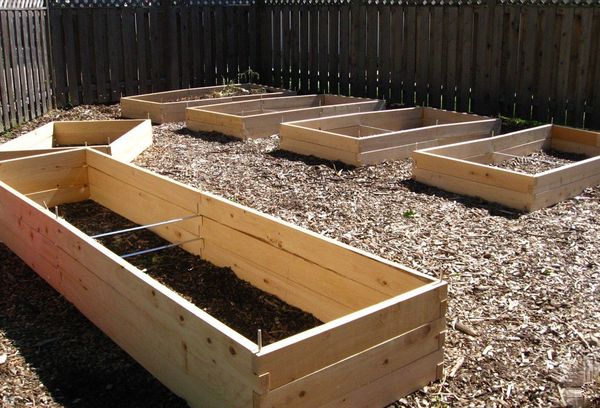
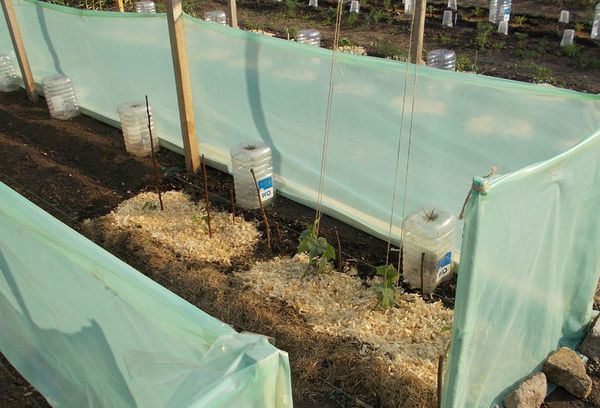
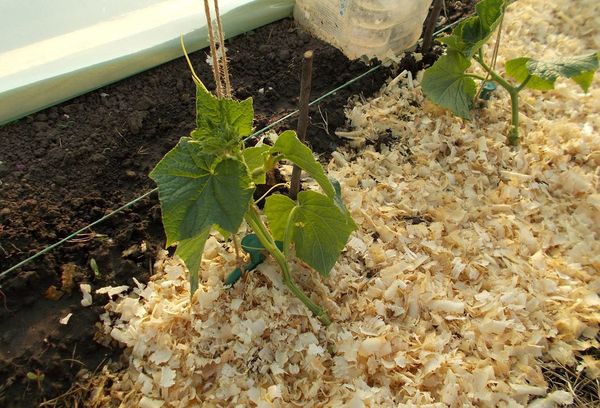
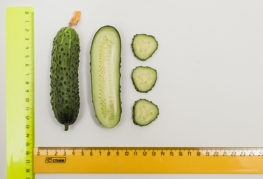



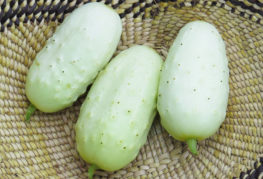

and will be published shortly.